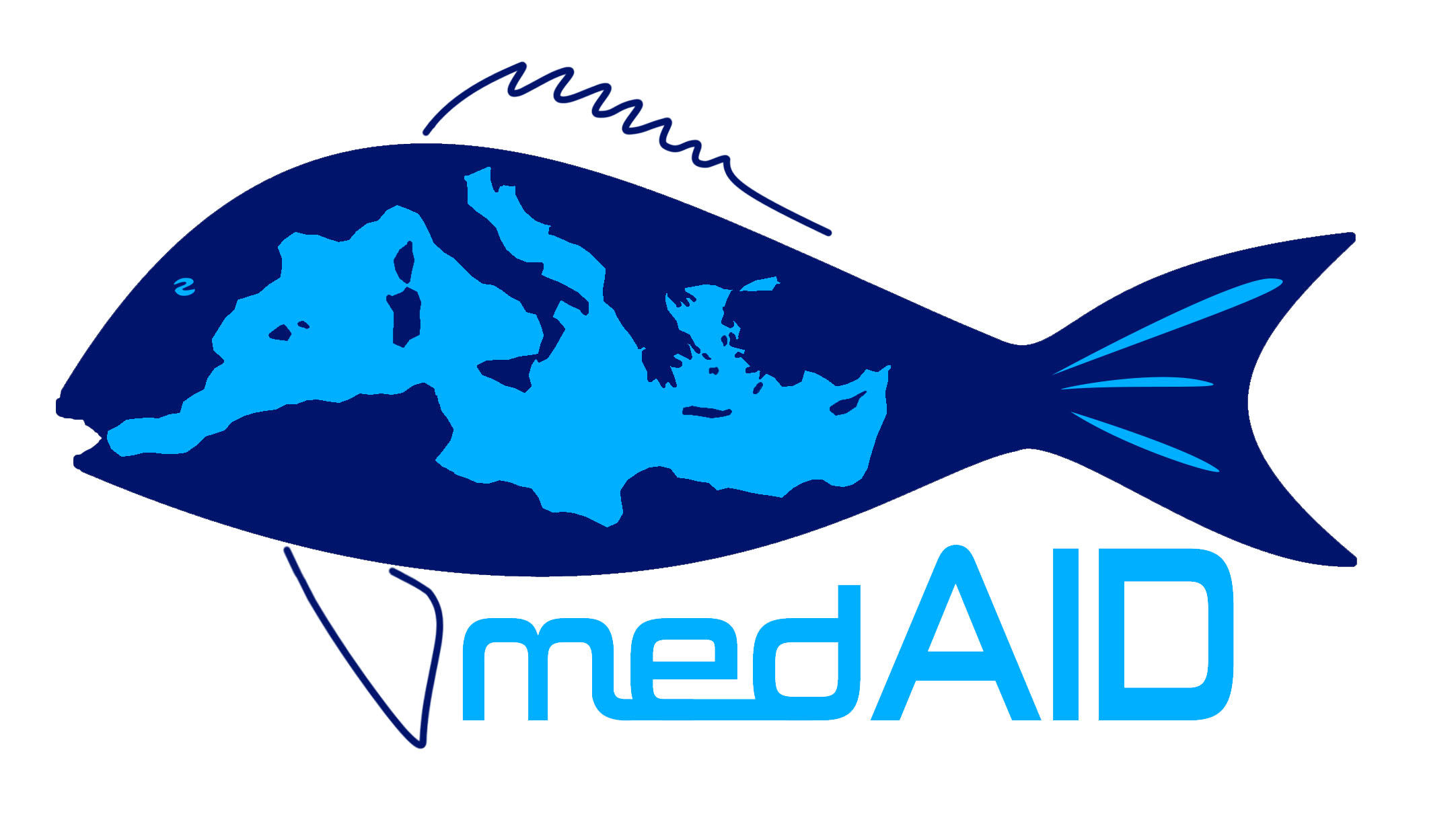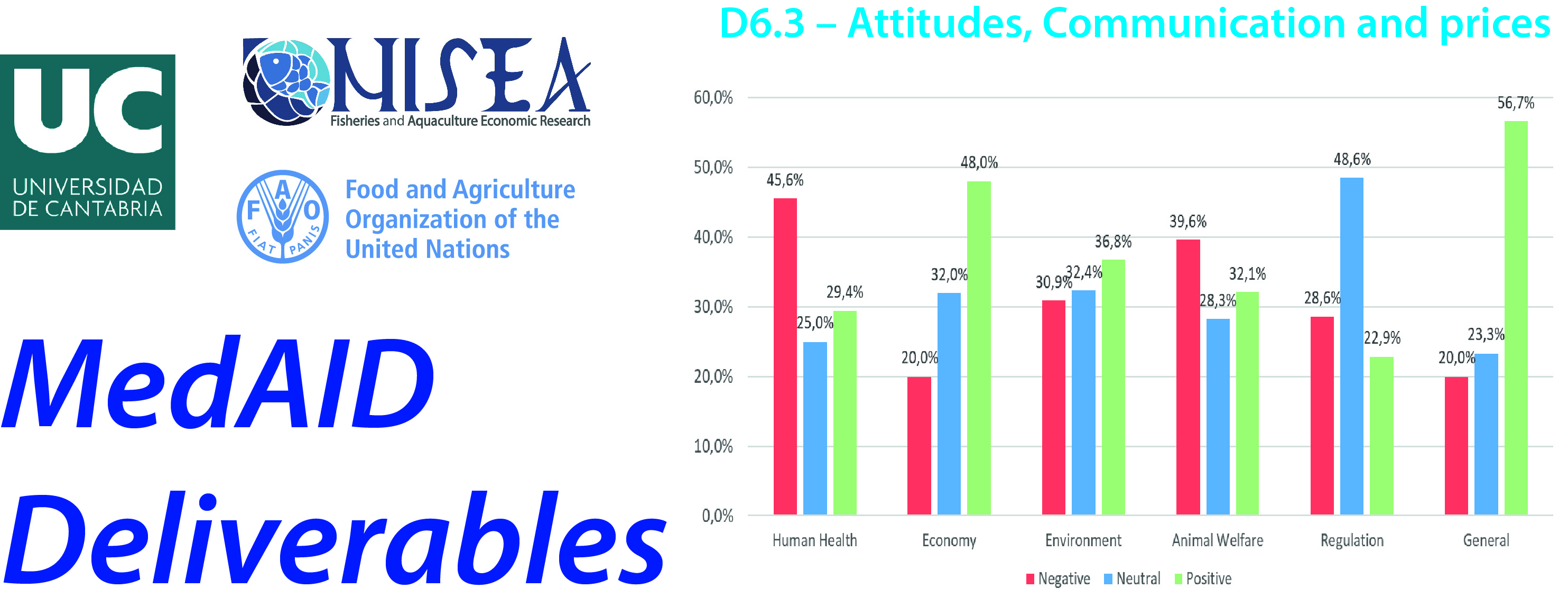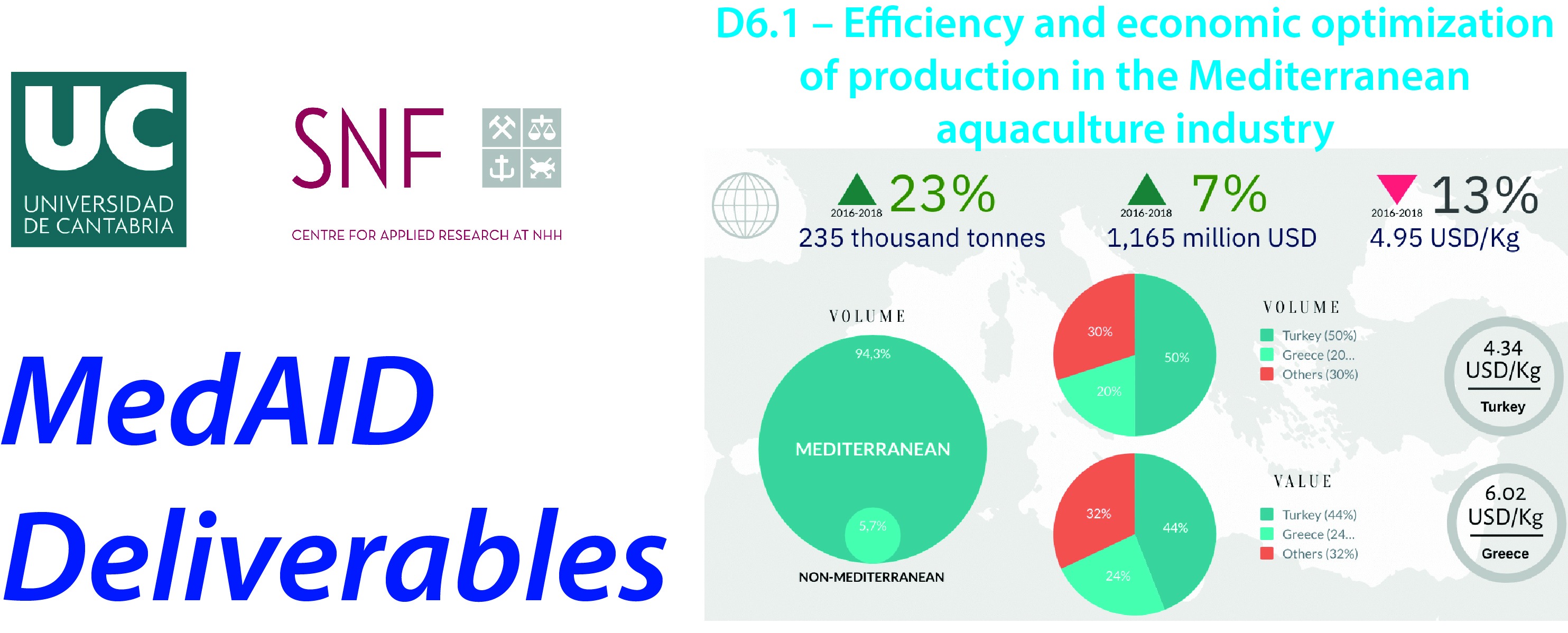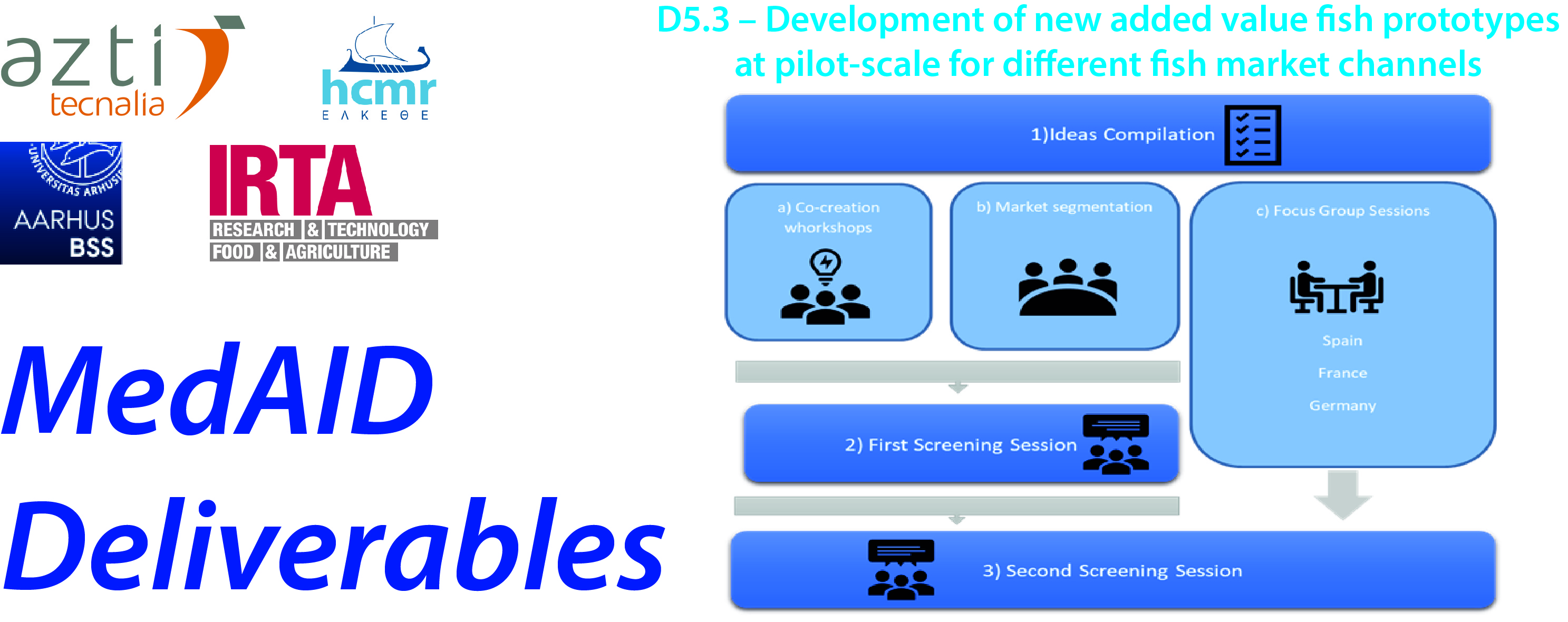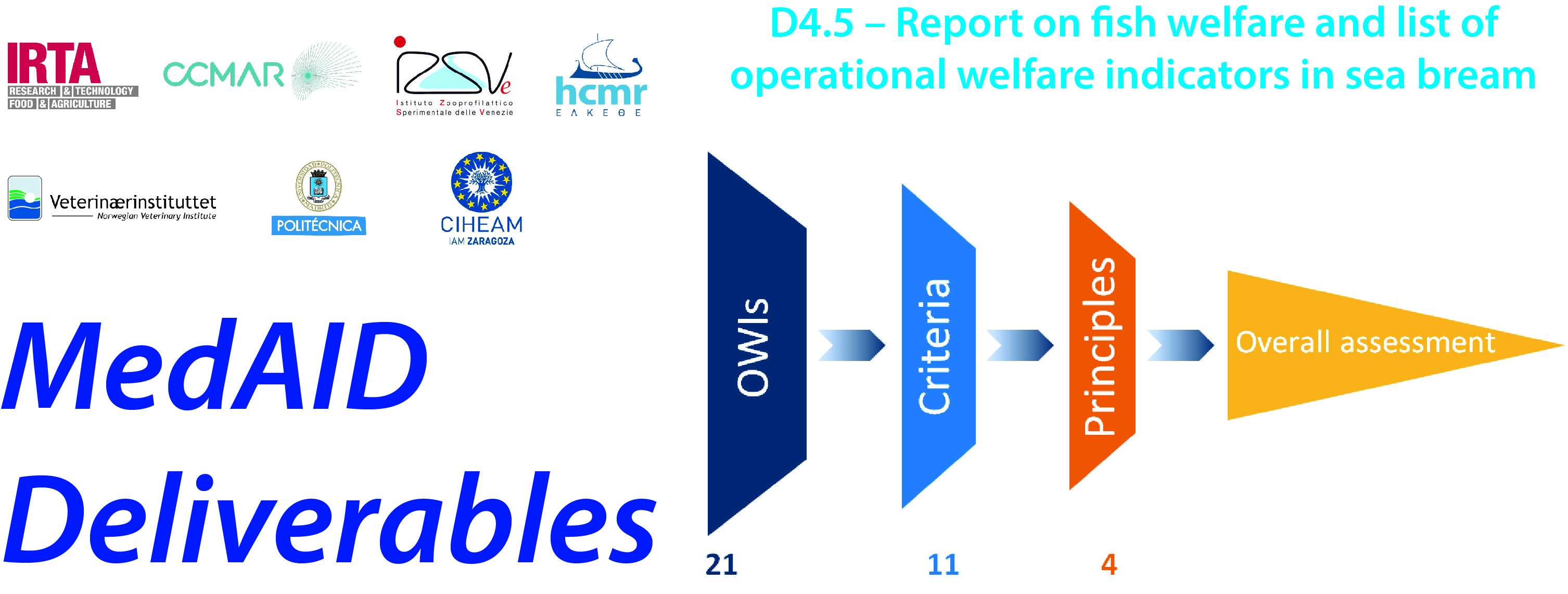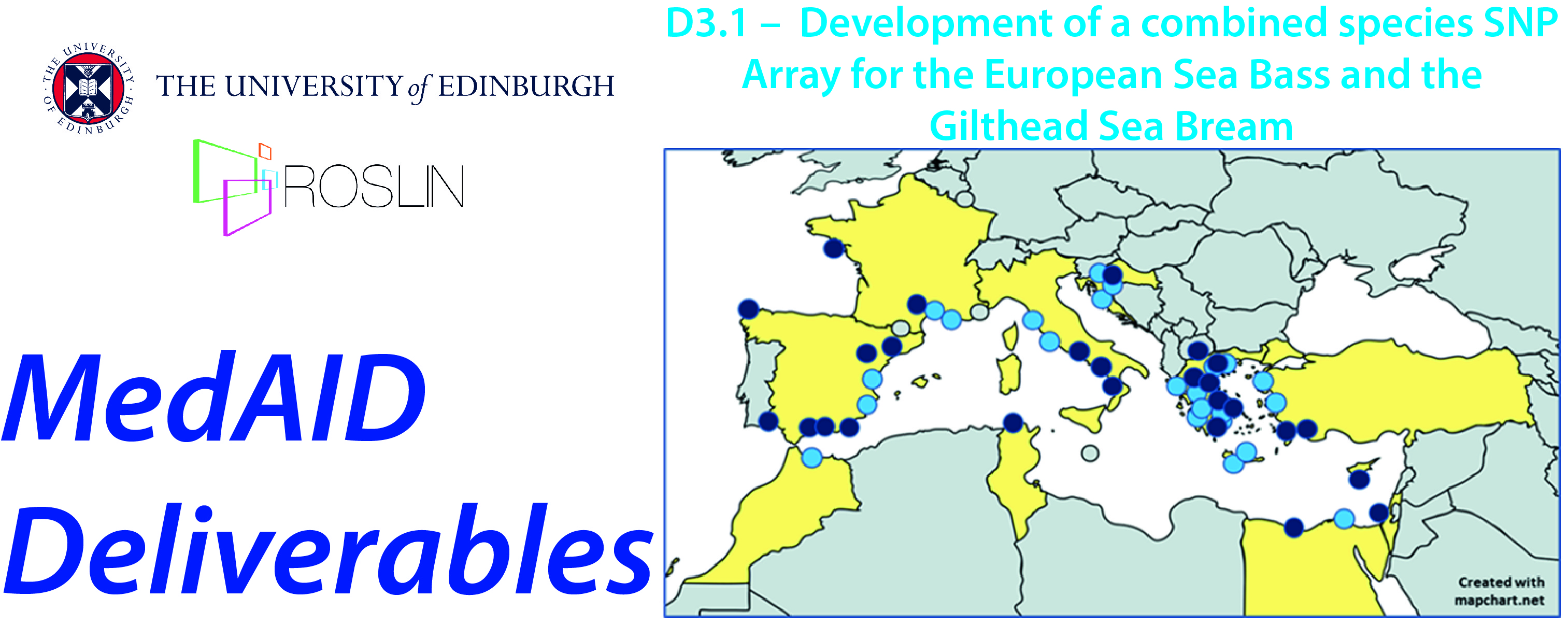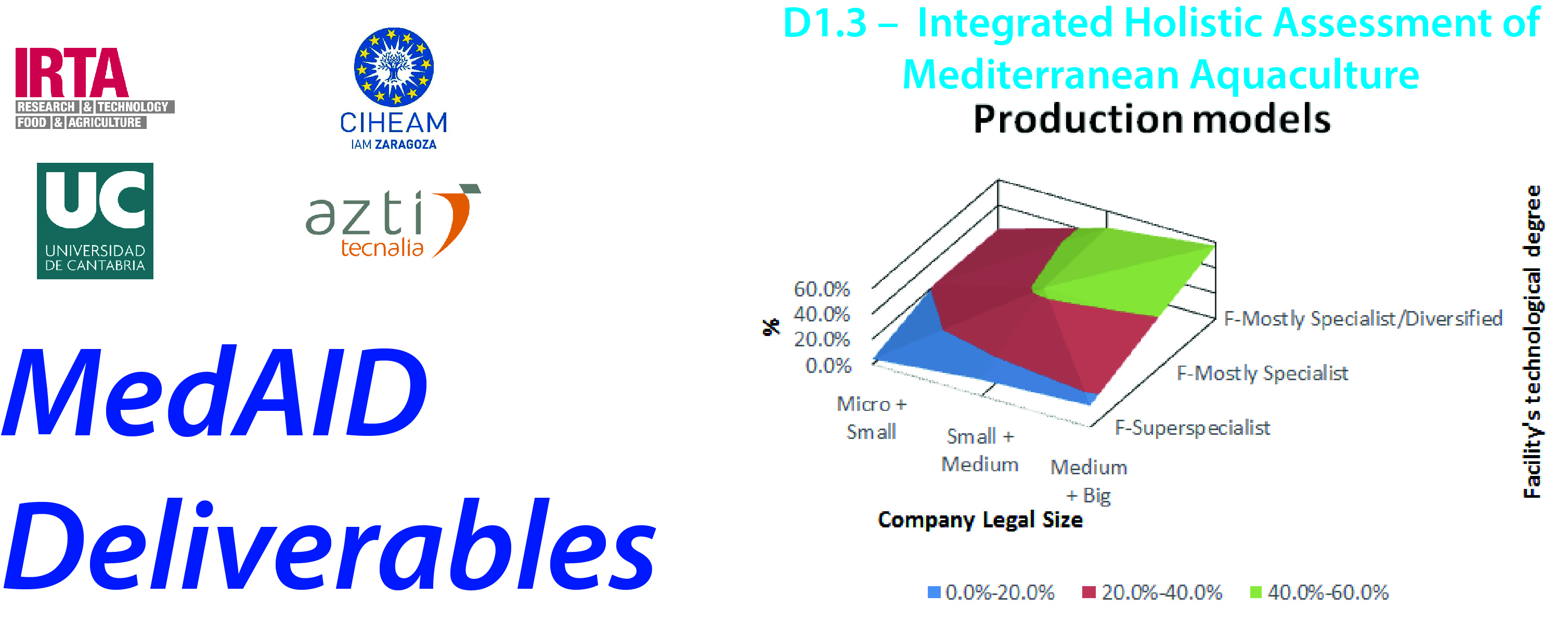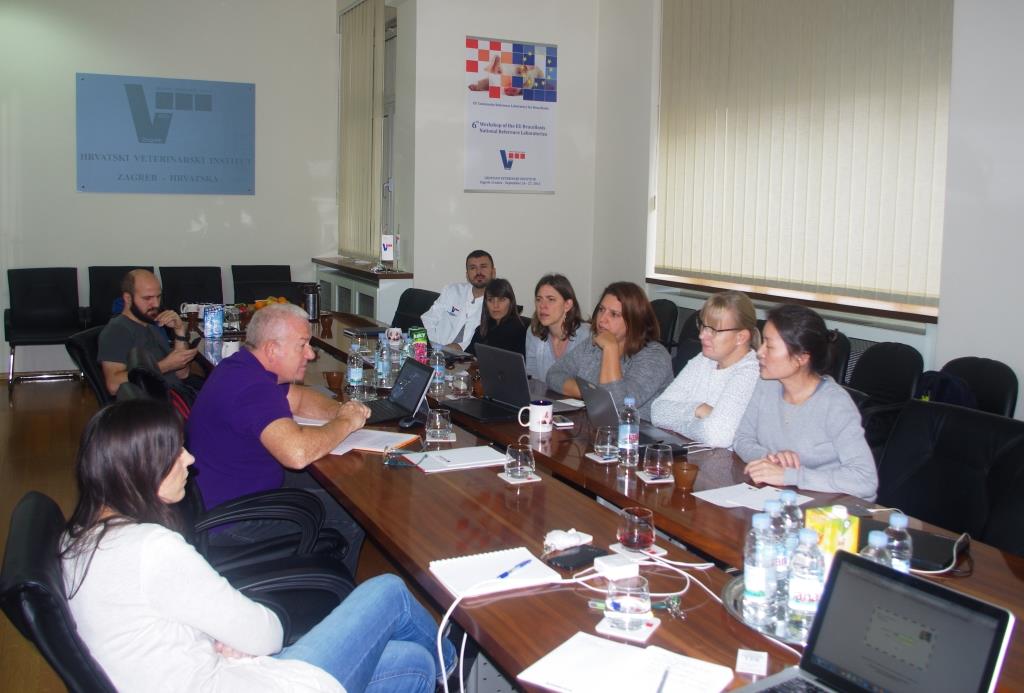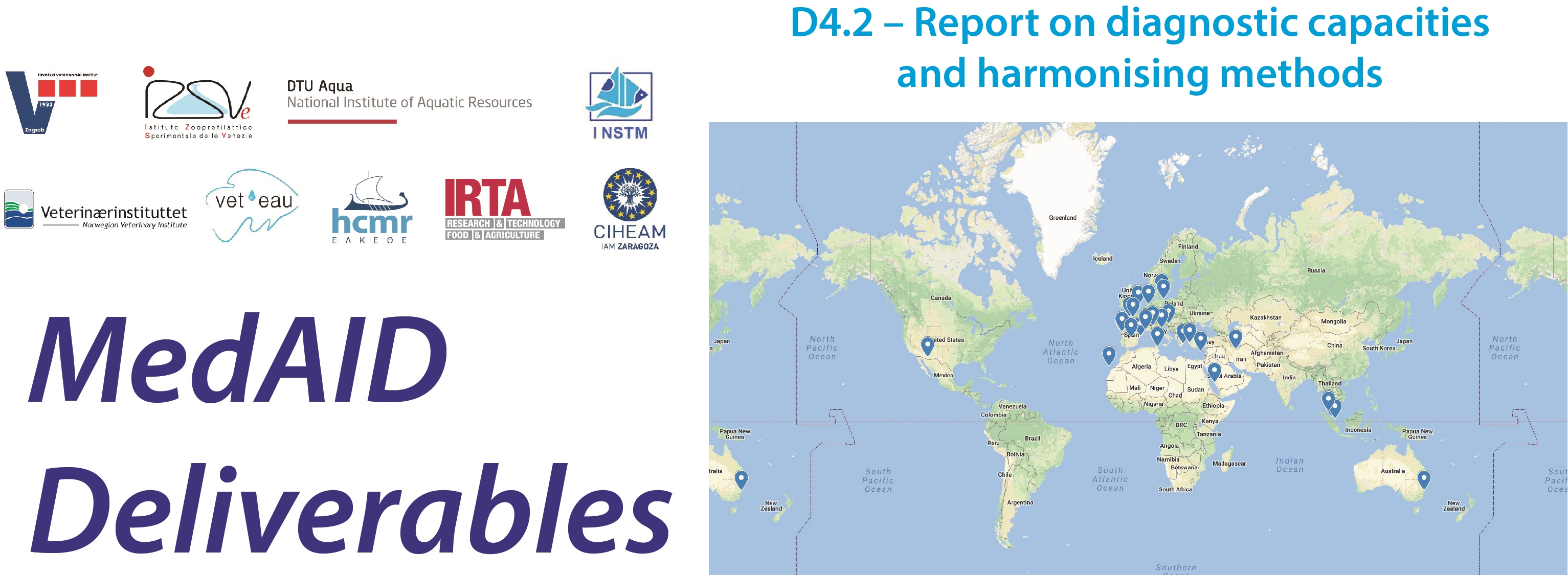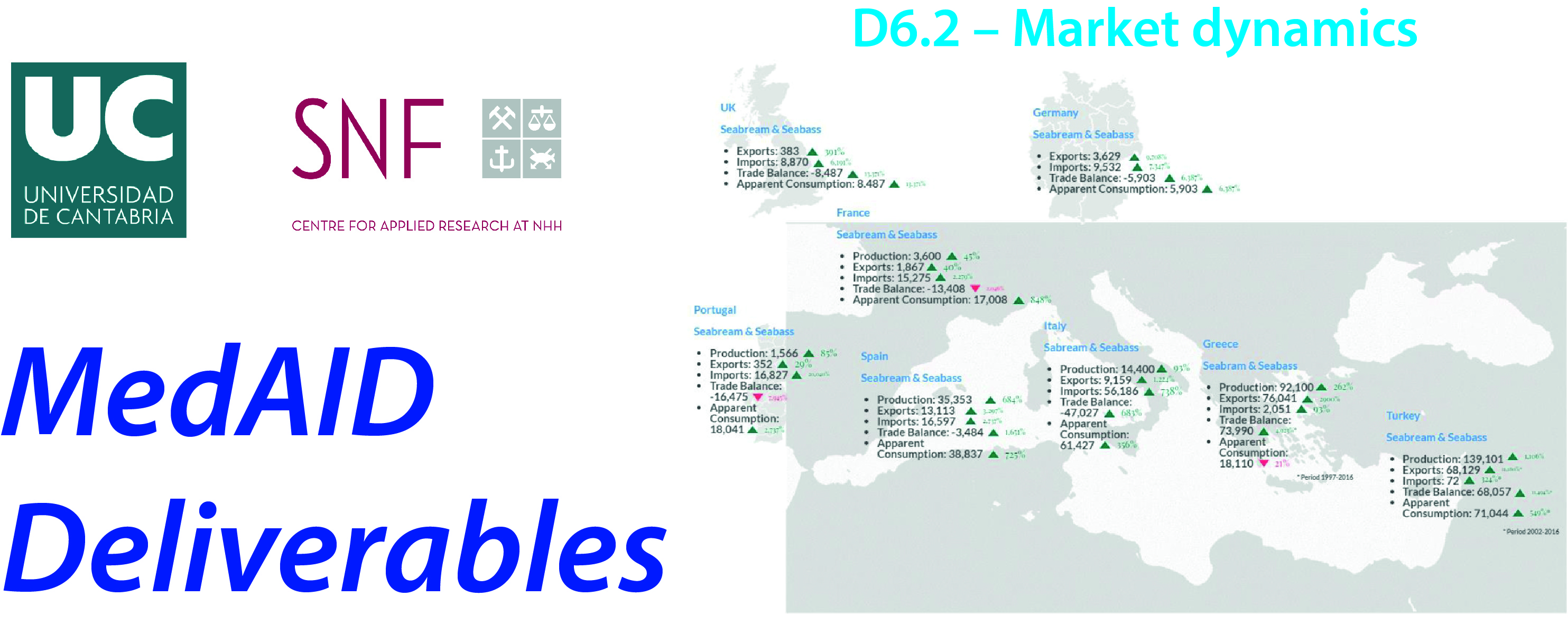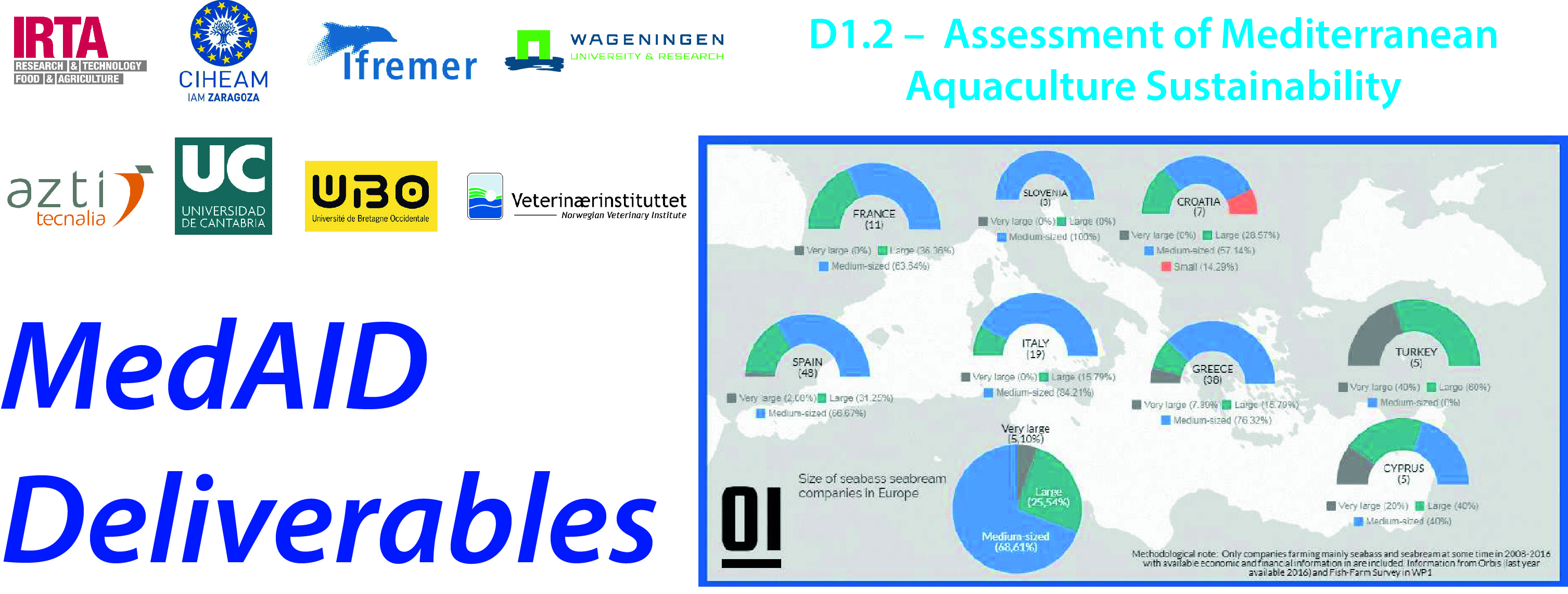The MedAID project (Mediterranean Aquaculture Integrated Development) aims to improve the key performance indicators (KPIs) of Mediterranean mariculture and considers health and welfare prerequisites for sustainable and profitable aquaculture in the Mediterranean area. Work package 4: “Health management and diseases and fish welfare” addresses health issues and endeavours to provide tools and common strategies for the prevention and diagnosis of major diseases by creating an operative and collaborative Mediterranean platform. Task 4.2. “Strengthening diagnostic capacities by harmonising competences” focuses its objectives on i) The establishment of systems for communication between key players within diagnostics and health management, and ii) The evaluation of laboratory capacity and strengthening of diagnostic competence at national and regional level focusing on the most important pathogens. Given that European sea bass and Gilthead sea bream diseases are listed neither in OIE aquatic code nor in EU legislation, and there are no standards for the improvement of their health, the first step was to define the most relevant diseases requiring improved diagnostics methodologies. The list of the most important diseases was created as a product of several activities: i) results of the survey organised by European Union Reference Laboratory (EURL) for Fish and Crustacean Diseases for fish diseases addressed to a group of fish pathologists from the Mediterranean region consisted of questions designated to identify and characterise the most important diseases and map the health issues and infectious diseases, ii) the working group discussions during the annual meetings of national reference laboratories for fish diseases organised to define the perception of the impact and risk of infectious fish diseases in different parts of Europe, iii) data collected during the “Workshop on animal health and risk analysis in finfish aquaculture in the Mediterranean and Black Sea” organised by GFCM, in Larnaca, Cyprus on 3-4 October 2018 and iv) the results described in the MedAID “Assessment of the sustainability of Mediterranean aquaculture” (project Deliverable 1.2). These documents streamlined the selection of viral and bacterial diseases needing harmonised and improved diagnostic protocols. The diagnostic procedures for selected viral and bacterial diseases are described in the MedAID’s “Diagnostic manual for the main pathogens in European sea bass and Gilthead sea bream aquaculture”. The diagnostic manual consists of the detailed protocols for sampling, shipping and receipt of samples in the laboratory, followed by protocols for diagnosis of Viral Nervous Necrosis (VNN), Vibriosis caused by V. anguillarum and V. harveyi, Photobacteriosis, infections caused by Aeromonas spp., Tenacibaculum spp., Mycobacterium spp., procedures in the case of mortalities caused by unknown pathogens and reporting of the results of diagnostic procedures. This manual can be a very useful document to improve individual laboratory competence, select the methods to be harmonized and secure confidence in test results throughout the Mediterranean basin. The diagnostic manual will be published in journal “Option Mediterannennes” by the end of the current year.
The capacity of a laboratory to diagnose and genotype VNN was evaluated by means of interlaboratory proficiency testing and it was concluded that there is a room for improvement, particularly in the ability of laboratories to genotype different genotypes of NNV.
Using Google forms, in cooperation with the PerformFISH H2020 Project, the diagnostic capacities of fifty-two laboratories throughout the Mediterranean basin were evaluated. It is concluded that capacities are not in tune with the aquaculture production and the pathways of improvement and strengthening should be imposed. More efforts should be put into building the capacities of countries lacking specific techniques, and systems for improved training of laboratory personnel is highly requested.
The process of strengthening diagnostic capacities started through activities such as the establishment of the MedAID Online Health Forum (which has already launched 3 open discussions on topics such as Sparicotylosis, VNN and Tenacibaculosis) and by organising advanced training courses for professionals on Aquatic Animal Health (as the two courses organised by CIHEAM with collaboration of MedAID and other importante international partners. The above mentioned Diagnostic Manual will also contribute to the aim of enhancing diagnostic capacities. Such activities are important to sustain as pillars for improving disease management in the Mediterranean.
Access to the full deliverable
